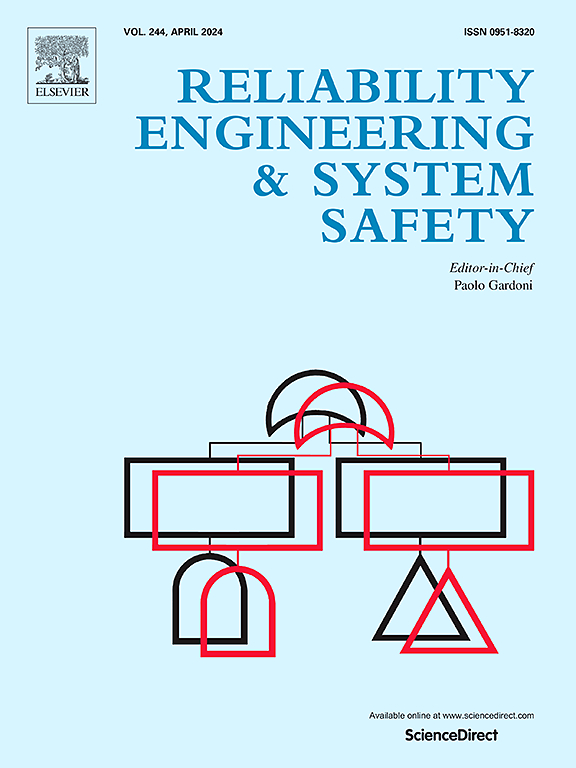A global attention based gated temporal convolutional network for machine remaining useful life prediction
IF 9.4
1区 工程技术
Q1 ENGINEERING, INDUSTRIAL
引用次数: 0
Abstract
As the core technique of the prognostic and health management field, data-driven remaining useful life (RUL) prediction generally requires abundant data to construct reliable mappings from monitoring data to machines’ RUL labels. However, the diverse working conditions of machines can lead to their different degradation trajectories, which makes similar data indicate diverse RULs of different machines. When predicting RULs with monitoring data, the phenomenon causes a severe label confusion problem and limits the performance of data-driven RUL prediction methods. In this paper, a new gated-temporal-convolutional-network-based method is proposed for RUL prediction tasks of machines. To handle the label confusion problem, a novel global attention mechanism is proposed, which enables the proposed model to identify confused data by the difference in machines’ global degradation tendencies. Besides, a new temporal convolutional network with a gating mechanism is proposed for better feature extraction performance. Moreover, a new nearest-neighbor-based data compensation strategy is designed to simplify data distributions. Both strategies also contribute to the solution of the problem. The proposed method is verified on an aircraft turbofan engine dataset and a bearing dataset. The experiment results show the effectiveness of the proposed method.
求助全文
约1分钟内获得全文
求助全文
来源期刊

Reliability Engineering & System Safety
管理科学-工程:工业
CiteScore
15.20
自引率
39.50%
发文量
621
审稿时长
67 days
期刊介绍:
Elsevier publishes Reliability Engineering & System Safety in association with the European Safety and Reliability Association and the Safety Engineering and Risk Analysis Division. The international journal is devoted to developing and applying methods to enhance the safety and reliability of complex technological systems, like nuclear power plants, chemical plants, hazardous waste facilities, space systems, offshore and maritime systems, transportation systems, constructed infrastructure, and manufacturing plants. The journal normally publishes only articles that involve the analysis of substantive problems related to the reliability of complex systems or present techniques and/or theoretical results that have a discernable relationship to the solution of such problems. An important aim is to balance academic material and practical applications.
 求助内容:
求助内容: 应助结果提醒方式:
应助结果提醒方式:


